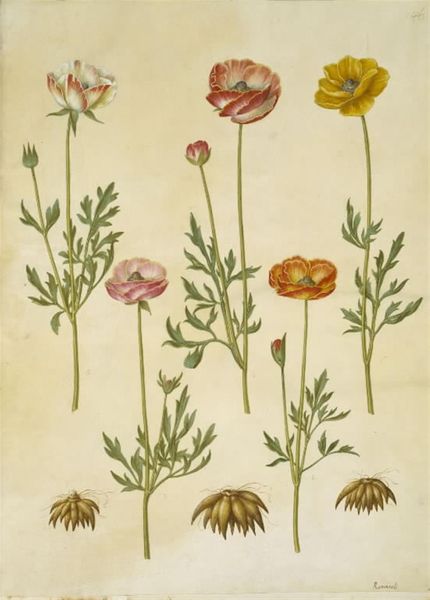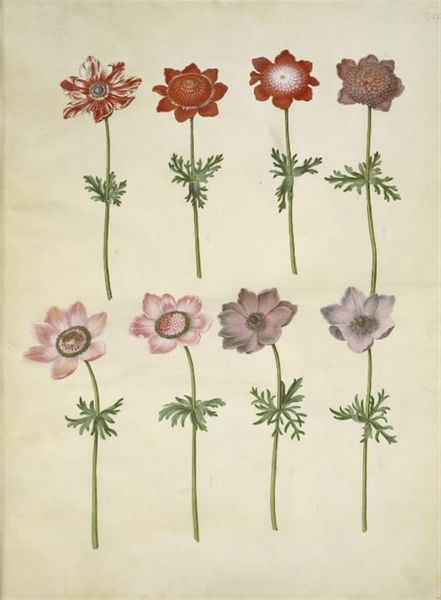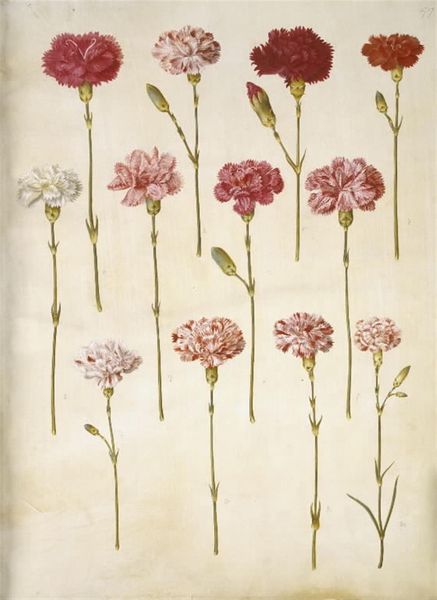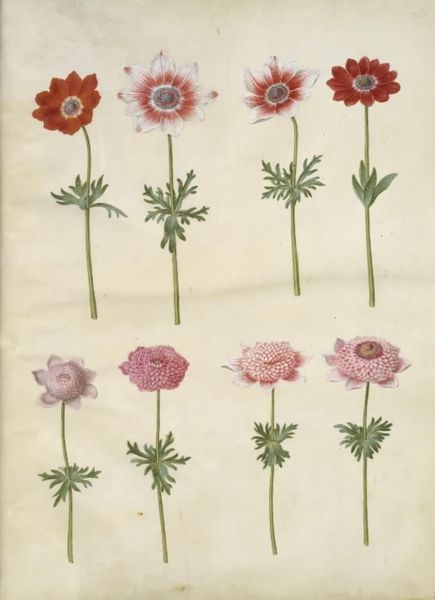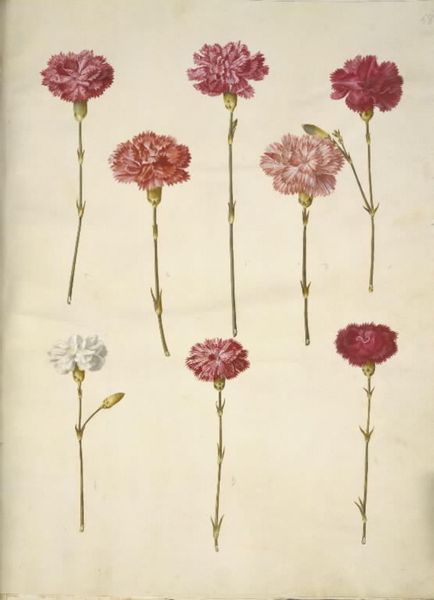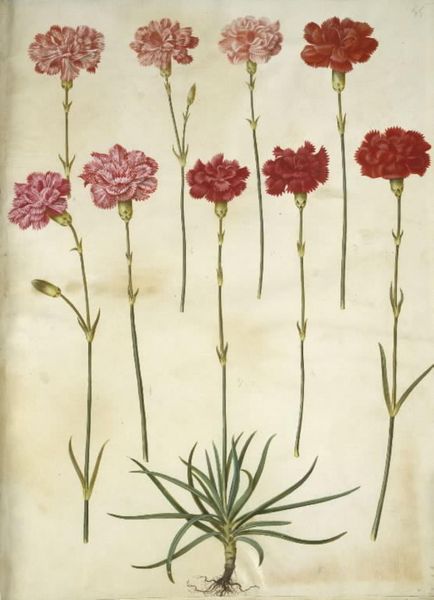
drawing, gouache, watercolor
#
drawing
#
gouache
#
watercolor
#
coloured pencil
#
watercolour illustration
#
northern-renaissance
#
watercolor
Dimensions: 505 mm (height) x 385 mm (width) (bladmaal)
Editor: Here we have Hans Simon Holtzbecker's "Anemone coronaria," or French Anemone, created sometime between 1649 and 1659 using watercolor, gouache, and drawing techniques. There’s something so delicate and almost scientific about it, in the way the different flowers are displayed. What stands out to you? Curator: Holtzbecker’s botanical studies offer more than just scientific illustration. We need to think about the socio-political implications inherent in depicting nature with such precision during this era. Consider the rise of colonialism and the appropriation of natural resources. Do you see these flowers as simply objects of beauty, or could they also represent a form of cultural and economic conquest? Editor: That’s a really interesting point! I hadn’t thought about it in terms of colonialism. I was mostly struck by the kind of detached objectivity in the rendering. So you're saying that depicting these anemones, even with the utmost care, could somehow be linked to power structures? Curator: Precisely! The very act of cataloging and classifying nature, during this period, often served to legitimize the exploitation of resources and people in colonized lands. How do you think the intended audience might have perceived this image, knowing the historical context? Would it evoke a sense of wonder, or perhaps, an unconscious acknowledgement of the power dynamics at play? Editor: It's a lot to consider. Seeing it in terms of those power structures changes my understanding. I came into this thinking about art and science. Now I have to really consider art, science, and the role of historical power structures. Curator: Indeed. These images serve as beautiful reminders to continually question the narratives around what we see, pushing us to unearth the complex web of power, knowledge, and representation.
Comments
No comments
Be the first to comment and join the conversation on the ultimate creative platform.
